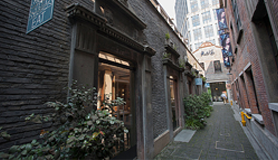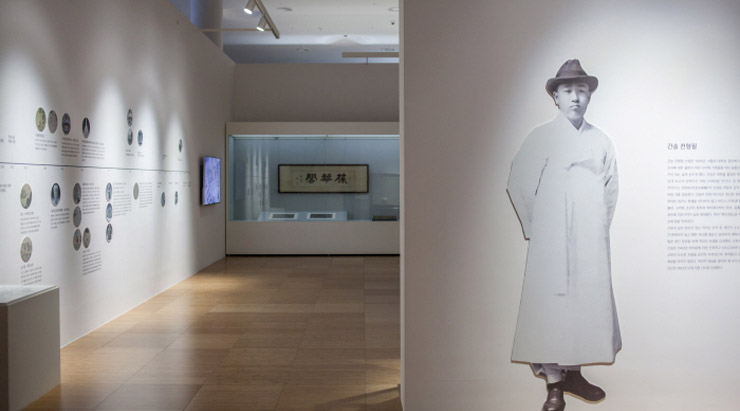
간송미술관
간송미술관은 대한민국 최초의 근대식 사립박물관이다. 1938년 간송 전형필 선생이 설립한 보화각이 전신으로, 1966년 간송미술관과 한국민족미술연구소 체제로 변경되었다.
[자세히보기]출처 : Wikipedia
Gansong Art Museum
Gansong Art Museum is the first modern private museum of Korea and was founded by Jeon Hyeongpil in 1938. The museum was named after the pen name of the founder, Gansong...
[Learn more]Source : Wikipedia
□ Maebyeong celadon vase with sanggam engraved cranes (No.68) / 청자상감운학문매병 (국보 68호)
□ Hunminjeongeum (No.70) / 훈민정음 해례본 (국보 70호)
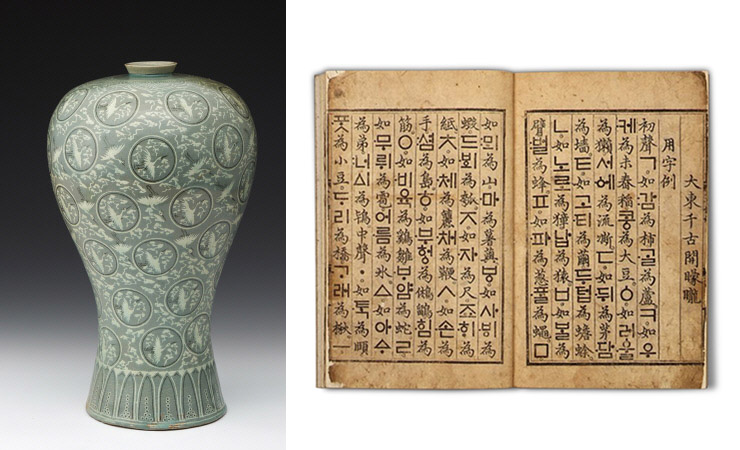
청자 상감운학문 매병
고려 매병(梅甁)은 중국 송(宋)나라 매병에서 유래된 것이지만, 12세기경에 이르러서는 고려만의 풍만하면서도 유연한 선의 아름다움이 나타난다. 이러한 고려 매병의 양식은 이 작품에서 세련미의 극치를 보여주고 있다. 높이 42.1㎝, 입지름 6.2㎝, 밑지름 17㎝의 크기의 매병의 구연부는 작고 낮으며 밖으로 살짝 벌어져 있다. 어깨는 넓고 당당한 모습을 보여준다. 구연부의 아랫부분에는 꽃무늬를 둘렀으며 굽 위로는 연꽃무늬를 둘렀다. 몸통 전면에는 구름과 학을 새겨 넣었는데, 흑백상감한 원 안에는 하늘을 향해 날아가는 학과 구름무늬를, 원 밖에는 아래쪽을 향해 내려가는 학과 구름무늬를 새겼다. 학의 진행방향을 다르게 표현한 것은 도자기 표면이라는 일정한 제약을 넘어 사방으로 공간을 확산시켜 짜여진 구획으로부터의 자유로움을 추구한 듯하다. 이같은 표현상의 변화 추구와 함께 문양처리의 능숙함에서 고려 도자기의 우수함과 고려인의 창의력을 엿볼 수 있다.
[자세히보기]출처 : 문화재청
Maebyeong celadon vase with sanggam engraved cranes
Maebyeong refers to Korean vessels with a small slightly curled mouth rim, short neck, round shoulder, and constricted waist. The maebyong is derived from the Chinese meiping (literally "plum vase"). They were first used to hold wine and later branches of plum blossoms.
[Learn more]Source : Wikipedia
훈민정음
이 책은 새로 창제된 훈민정음을 왕의 명령으로 정인지 등 집현전 학사들이 중심이 되어 세종 28년(1446)에 만든 한문해설서이다. 책이름을 글자이름인 훈민정음과 똑같이 ‘훈민정음’이라고도 하고, 해례가 붙어 있어서 ‘훈민정음 해례본’또는 ‘훈민정음 원본’이라고도 한다. 전권 33장 1책의 목판본이나, 앞 2장은 1940년경에 복원된 부분이다. 구성을 보면 총 33장 3부로 나누어, 제1부는 훈민정음의 본문을 4장 7면으로 하여 면마다 7행 11자씩, 제2부는 훈민정음해례를 26장 51면 3행으로 하여 면마다 8행 13자씩, 제3부는 정인지의 서문을 3장 6면에 1자 내려싣고, 그 끝에 ‘정통 11년’(1446)이라 명시하고 있다. 『세종실록』에 의하면 훈민정음은 세종 25년(1443)에 왕이 직접 만들었으며, 세종 28년(1446)에 반포한 것으로 되어있는데, 이 책에서 서문과 함께 정인지가 근작(謹作)하였다는 해례를 비로소 알게 되었다. 또한 한글의 제작원리도 확연하게 드러났다.
[자세히보기]출처 : 문화재청
Hunminjeongeum
Korea's official script is Hangeul, the unique Korean alphabet. This name, a compound of han, meaning "the Korean people" or "great" and geul, meaning "letters," was given to it early in the 20th century. The creator of hangeul was King Sejong the Great (reigned 1418-1450), the fourth king of the Joseon Dynasty. Sejong was concerned that Chinese characters, until that time used to write Korean, were a writing system for representing Chinese, a language completely different in structure from Korean, and were therefore hard for Koreans to learn and use.
[Learn more]Source : Cultural Heritage Administration
ⓟ Jeon Hyeongpil (1906-1962) / 전형필
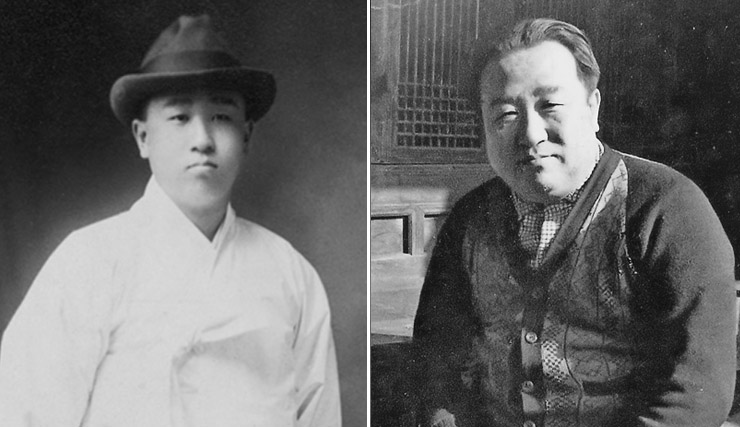
전형필(1906-1962)
전형필은 대한민국의 문화재 수집, 보존, 연구가이며 교육가이다. 자는 천뢰, 호는 간송, 지산, 취설재이다. 서울특별시에서 태어났다. 훈민정음 원본 등의 문화재를 수집하고, 일본으로 유출된 문화재들을 되찾아와 1938년 조선 최초의 근대사립미술관인 보화각을 세웠다.
[자세히보기]출처 : Wikipedia
Jeon Hyeongpil (1906-1962)
Jeon Hyeongpil was a Korean educationist and an art collector who gathered hundreds of Korean cultural assets and had the pen name of Gansong. He is famous for his great achievement to collect 12 national treasures, 10 treasures and 4 cultural assets designated by Seoul metropolitan government. He strove to bring back Korean cultural assets and heritage from Japan since a great deal of Korean antiquities were taken by Japanese collectors during colonial rule of Japan in the early 20th century
[Learn more]Source : Wikipedia










 HOME
HOME

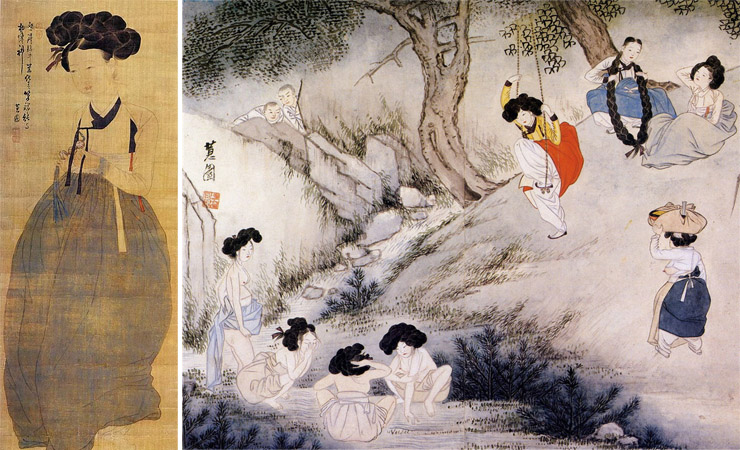
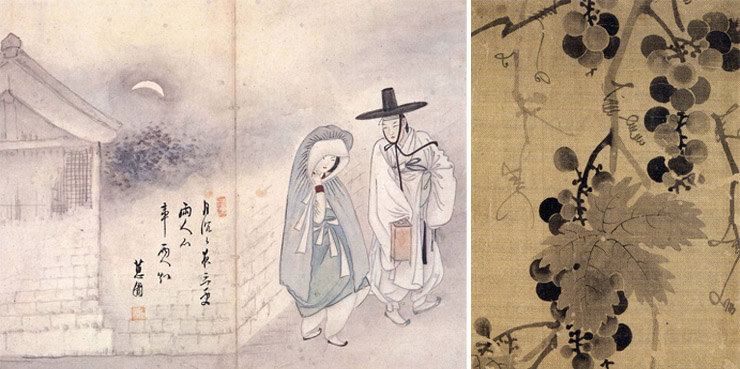

 0
0